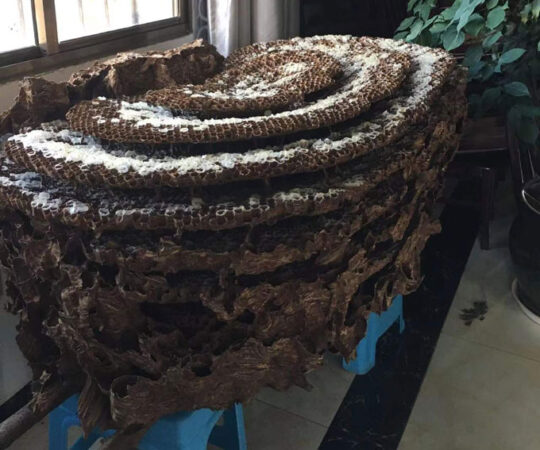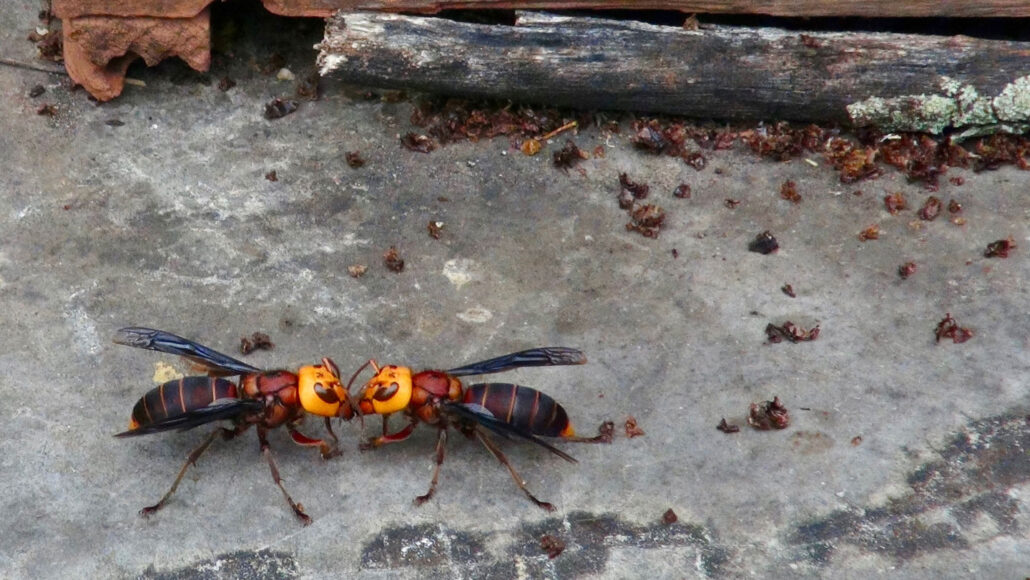Male Asian giant hornets captivated by the chemical signals of a ready-to-mate queen could one day find themselves stuck in a trap instead.
In a new study, scientists identified three chemicals in the sex pheromone of Asian giant hornet queens. When traps with those chemicals were placed near the hornets’ nests in China — part of their native range — the traps ensnared thousands of males but no other insects, researchers report March 14 in Current Biology.
The finding is a step toward designing pheromone traps, a common tool to monitor or control insect populations, for these hornets, says James Nieh, a behavioral ecologist at the University of California, San Diego.
Starting in 2019, nests housing Asian giant hornets (Vespa mandarinia) — nicknamed “murder hornets” for their habit of feasting on honeybees — have popped up in a few places in western North America (SN: 5/29/20). Studies hint that the insects could spread across eastern Washington, Oregon and British Columbia in Canada, and scientists have launched efforts to control the invasion (SN: 10/1/20). The Washington State Department of Agriculture even encourages state residents to help trap the hornets using plastic bottles, orange juice and rice cooking wine.
But potent insect traps should provide “something that would ideally be irresistible,” Nieh says.
Using gas chromatography and mass spectrometry, Nieh and colleagues identified hexanoic acid, octanoic acid and decanoic acid as key components of a queen’s sex pheromone. In the lab, male hornet antennae reacted — a sign of attraction — to each of the pure compounds as well as a mixture of the three. The team then crafted traps using a sticky board, a dummy male hornet and a vial filled with each of the individual pure acids, a mix of the three or extracts from the pheromone-secreting glands from a queen.
The male hornets had a clear preference for the queen extracts, though the isolated chemicals as well as mixes of the three trapped many hornets as well. In one test, for example, extracts from just one gland trapped about 500 male hornets — more than twice the number trapped by full concentrations of the three-chemical cocktail, which itself performed on par with two of the undiluted isolated chemicals. Control traps lacking the extracts or pure chemicals, meanwhile, attracted few males.
Because male Asian giant hornets were most attracted to the pheromone gland chemicals compared with the individual acids or the mix, that means there are probably other compounds in the pheromone that could make traps even more effective, Nieh says.
It’s unclear whether the traps work over longer distances. But hornet queens’ sex pheromones probably lure males from farther away to avoid “incestuous inbreeding,” Nieh says. The traps could be most useful in late fall during the hornets’ mating season.
The finding is “important work,” says Timothy Lawrence, an apiculturist at Washington State University in Coupeville, who wasn’t involved with the study. Finding a way to attract worker hornets, not just males in search of a mate, would be great, but the results are still a “major step forward,” he says. “The sooner we find a reliable way to attract males and find nests, the better.”

North American researchers have mounted efforts to track down Asian giant hornet nests
— like this one collected in its native territory in Kunming, China — in an effort to control the invasive insect’s spread.(Image by DONG Shihao)
URL: https://www.sciencenews.org/article/murder-hornet-asian-giant-trap-sex-pheromone


